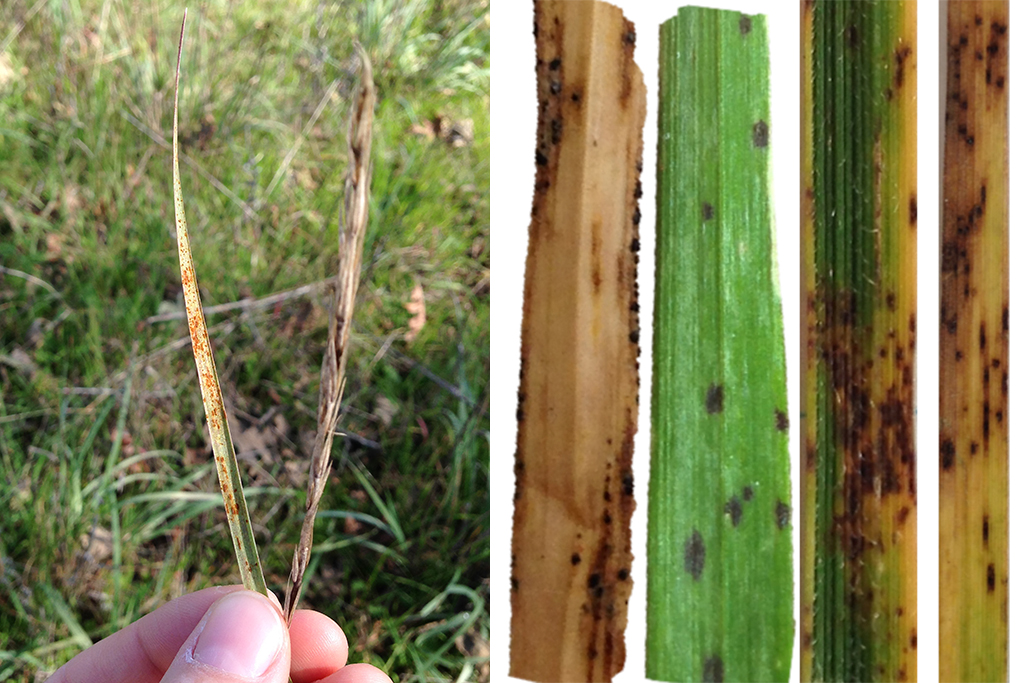Effect of indigenous fungal pathogens on competition between native and exotic grasses

Summary
Pathogens are very common in natural plant communities, yet in California grasslands we know little about which pathogens infect native and exotic grasses. Since pathogens affect growth, survival, and reproduction, they may not only affect individual plants but also affect the outcome of competition between native and exotic grasses. For example, pathogens could help native grasses to coexist with exotic grasses if the pathogens are more harmful to exotic grass population growth. While plant pathogens may bring to mind devastating epidemics, the vast majority of pathogens occur naturally at low to moderate abundance, and may have effects we perceive as neutral or even positive, often keeping plant populations in check.
To understand the role that fungal pathogens play in California grass communities, we will perform competition and pathogen inoculation experiments. The competition experiment will measure the strength of competition between native grasses (Stipa pulchra and Elymus glaucus) and exotic grasses (Avena barbata, Bromus hordeaceus, Bromus diandrus, and Phalaris aquatica). To do so, we will manipulate the density of each species, and measure the responses of all other species in terms of seed production and survival. The weed matting visible next to the Sun Field Station parking lot helps us to carefully control the abundance of each species. Overlaid on this competition experiment is a pathogen inoculation experiment using fungal pathogens cultured locally in JRBP. By comparing infected and uninfected plants, we can measure how pathogens affect the strength of competition between grass species. Following the experiments, we will use mathematical models to translate the field data into longer-term population growth predictions.
In our lab on Stanford campus, we will identify fungal taxa using DNA sequencing and maintain a library of fungal cultures from JRBP.
Project Location (Sectors 21, 30)
 |  |  |  |  |  |  |  |  |
 |  |  |  |  |  |  |  |  |
 |  |  |  |  |  |  |  |  |
 |  |  |  |  |  |  |  |  |
 |  |  |  |  |  |  |  |  |
 |  |  |  |  |  |  |  |  |
Useful Links
Visible from Trail/Road
E - Chaparral Fire Road




